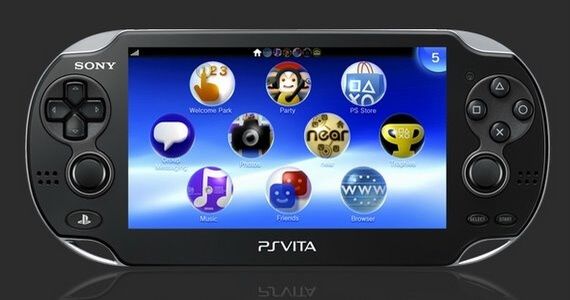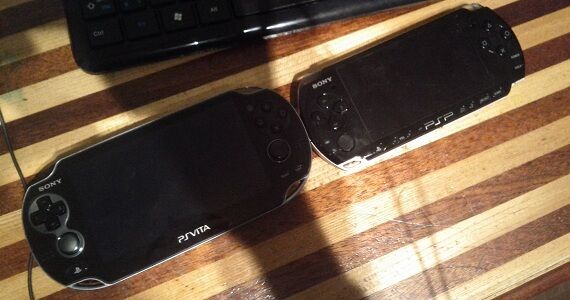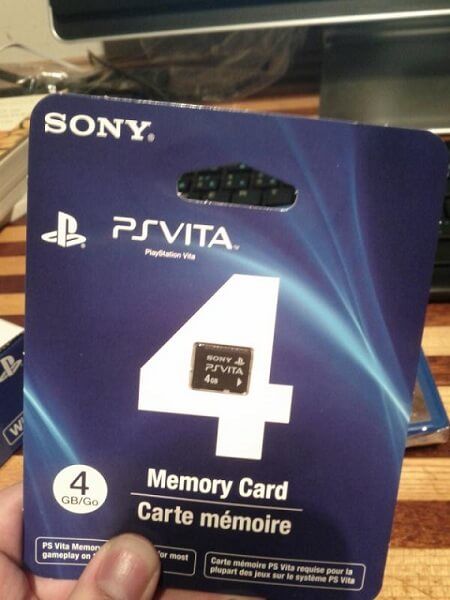Those who pre-ordered the PlayStation Vita First Edition Bundle are no doubt sitting around playing with the system right now. Those of you waiting until next week to pick up your new handheld don't have to miss out -- we're here to share our first impressions of the Sony's latest entertainment device.
First off, those who purchase a memory card -- which is unfortunately required for most retail games -- will want to insert it before powering on the Vita for the first time. The memory card itself is very small, making the PSP's Memory Stick Duo cards look giant by comparison. Taking the card out of its packaging is quite annoying, seeing as it's stuck between two thin pieces of paper.
The first thing that gamers will notice upon holding the Vita is that it's big. Compared to the PSP-3000 and my Nexus S phone, the Vita is a monster. This can cause issues when using the touchscreen keyboard, seeing as users may have to stretch their thumbs to reach the center of the screen. As gamers are no doubt aware, the Vita has two analog sticks. The best part about them? They're actually sticks! They feel much easier to use than the PSP's analog nub, though they cannot be used as buttons, like with the PS3 controller. The actual system itself feels much stronger than the PSP-3000 as well. Vita is definitely not flimsy.
Once users are done being infatuated with the sticks, they'll want to power up the system. The Vita is powered on by holding down the power button for a roughly five seconds. Thankfully, this button is located at the top of the Vita and not on the right side, like the PSP. Users are then greeted with a screen that provides introductions for the touch controls. The screen motions players to wipe off the splash screen by having them "peel" it off. This is done by having the user move their finger from the top right corner of the screen towards the center. I encountered an issue with this as the screen wouldn't let me peel it. Oddly enough, once I unplugged my headphones from the system it worked flawlessly. After the initial start up, this was no longer an issue.
Setting up the date and time is similar to the PSP, simply by scrolling through options. The date and time can only be set by using the touchscreen. Once that's done, users will be asked if they have a PSN account. It doesn't matter if you do, press no. Even if you have a PSN account, you can't sync it with the Vita until you've update the system's software -- without having to reformat the system. And you can't update the software until you reach the home screen. And you can't enter the home screen until you answer the PSN account question.
If it sounds convoluted, that's because it is. For "simplicity," simply say you don't have a PSN account. This will create a trial account. From there, when you reach the home screen, scroll to Settings and update the software. You can sign in with your actual PSN account after the software has been updated, also via the Settings menu.
After that is out of the way, the Vita becomes much more simple to use. Players are greeted by a video showcasing a few features, and can then access the Welcome Park app to learn how to use the Vita. This involves some mini games, including one with an adorable smiley face. Welcome Park itself has some trophies, so you might as well give it a shot. The Vita OS will take some time to learn, especially for those who are used to the PS3 and PSP's XMB. A helpful tip: the PS button is your friend. It will essentially allow you to back out of an application so you can reach the home screen.
Aside from the aforementioned Vita and memory card, the First Edition bundle also comes with a few other items. Included in the package are:
- PlayStation Vita System (Wi-fi model for Canadian users, 3G for American)
- 4GB Memory Card
- Retail copy of Little Deviants
- USB Cable
- AC Adaptor and Power Cord
- Limited Edition PS Vita Case
- Set of AR cards
When it comes to gaming, the Vita plays exceptionally better than the PSP. Due to the Vita's larger size, players won't find their hands cramping up as often, which is especially helpful during long gameplay sessions. The new analog sticks also help out tremendously and it no longer feels like one needs to exert themselves to use the sticks, as they provide much more fluidity than the analog nub ever did.
When playing through the first couple of races in WipEout 2048, the sticks were very responsive, even recognizing the most subtle touch. The face buttons (triangle, circle, square, cross) are spaced very close together, but players will hardly notice this. I was able to air break in WipEout without accidentally pressing the the "fire" button. The whole system feels much more ergonomic, though of course, being a handheld there can still be a few comfort issues: hand cramps can still happen, they'll just occur much less frequently. It will be interesting to see how the system's analog sticks play in regards to shooters. The PSP control scheme was never ideal for third/first person shooters, but we'll have to wait until Resistance: Burning Skies launches to try that out.
And that's our first impressions of the Vita. It's a fun device to use, once players get past the clunky start up, of course. Look forward to our full review in the coming days.
-
Follow me on Twitter @AnthonyMole



